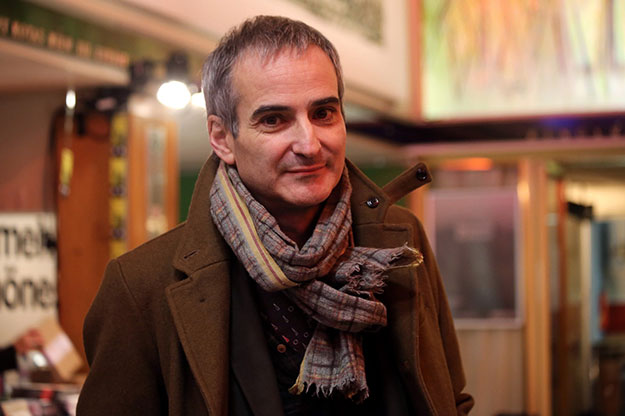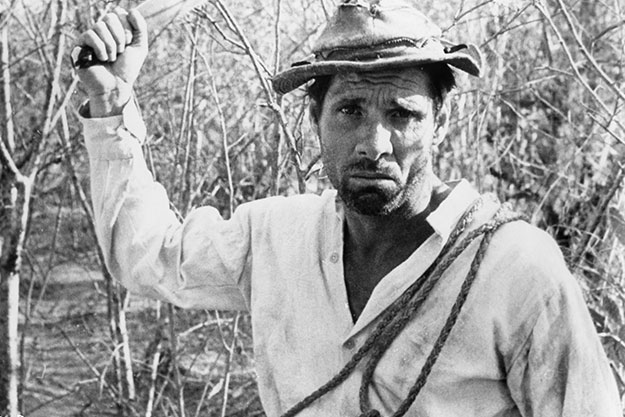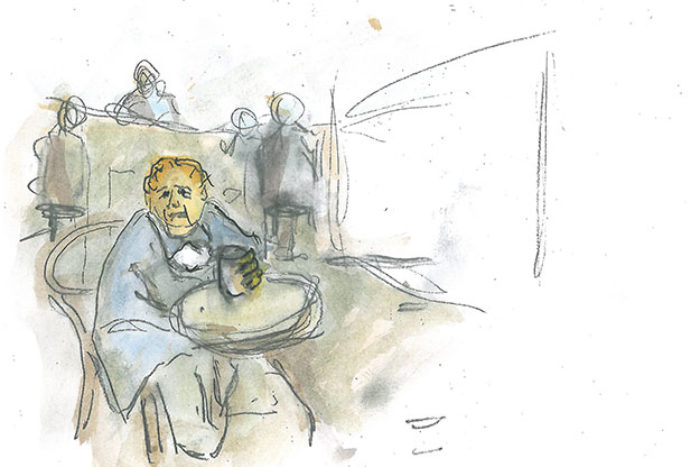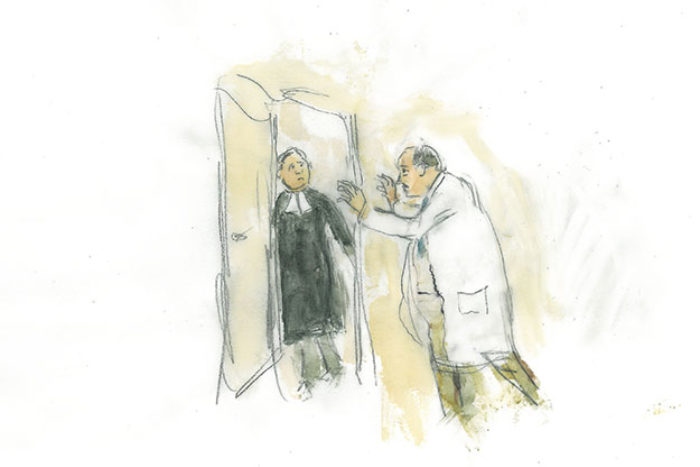News to Me: Roy Andersson, Olivier Assayas, Chloé Zhao
Roy Andersson’s About Endlessness
Adolf Hitler in his bunker. A midwife who loves champagne. A divorce prosecutor who doesn’t trust banks. A man who hasn’t yet met love.
These are some of the characters slated to appear in About Endlessness, the next installment in Roy Andersson’s singular collection of blackly comic films about the human condition. Consisting of a series of loosely connected—and meticulously designed—vignettes, About Endlessness is similar in tone and style to the director’s Living Trilogy (which concluded in 2015 with A Pigeon Sat on a Branch Reflecting on Existence), except for a few key differences.
For one, About Endlessness features a voiceover—a first for the director. “There’s a fairy describing things she has seen, both beautiful and horrible,” Andersson, who is currently filming in his studio in Stockholm, told Film Comment. The narrator is modeled on Scheherazade in Arabian Nights, “who escapes execution by telling the king interesting stories. Since there are endless interesting stories about mankind, she can keep telling them for 1001 nights.”
Cinematographer Gergely Palos, who previously collaborated with Andersson on A Pigeon Sat on a Branch Reflecting on Existence, is shooting the film. Palos added that About Endlessness has a “more free” structure than the Living Trilogy. “There is no story. There are some characters which we see in several scenes, but there’s no story at all.” Visually, the film will be slightly more expressive in its use of light and color. “It’s a bit more emotional,” he said.
Andersson is known for his beautiful, hyperrealist sets, which are constructed from scratch within his studio. Palos said that their process starts with the watercolor paintings Andersson makes for each scene, some of which the director shared with us below. “Based on the drawings, we usually do a test in an empty studio, without any set, to find the best angles,” Palos explained. “And then we build the scene.” He prefers this method, he said, because it allows him to envision and plan the scene without being constrained by the set.
A variety of artistic influences usually inform Andersson’s films: Songs from a Second Floor was inspired by Peruvian poet César Vallejo, while Pigeon drew upon a number of references, including Fellini, Buñuel, and painters such as Francisco Goya and Bruegel the Elder. About Endlessness is visually inspired by the work of Vincent van Gogh and surrealist painter Marc Chagall, Andersson said.
“One scene is very much a Chagall image with a young couple flying over Cologne, destroyed by bombs during World War II. We also recently shot a scene where the set design is inspired by a sketch by van Gogh called La Guinguette. And one scene in the film re-creates a painting by a Soviet art collective depicting Adolf Hitler in his bunker just days before his suicide.”
About Endlessness is expected to finish shooting in July and will be ready for festivals by April 2019. It’s a much faster production timeline than usual for Andersson, whose last couple films took about seven years each to be completed. “We have managed to refine our work process,” Anderson said. “It’s still meticulous and we still strive for very precise expression, but we have added some techniques to visualize the scenes before we start building the sets.”—Devika Girish
Films on the Horizon

Olivier Assayas is in postproduction on his upcoming Non-fiction and is already developing his next title: Wasp Network, a Spanish-language feature about the Cuban Five, five foreign intelligence agents jailed in Miami for spying on the Cuban exile community. Assayas might follow that up with his long-stalled heist thriller Idol’s Eye. Chloé Zhao’s fascination with the American West continues: her next, after Cannes Directors’ Fortnight prize-winner The Rider, will be a biopic about Bass Reeves, the first black U.S. deputy marshal. And Jessica Hausner (Amour Fou) is working on her fifth feature, Little Joe, in which a mother and son are body-snatched by a mutated plant.—Devika Girish
Readings

Vidas Secas
✸ The legendary Brazilian filmmaker and Cinema Novo pioneer Nelson Pereira dos Santos died last week, on April 22. The Academy of Motion Picture Arts and Sciences recorded a wide-ranging interview with him in 2016, as part of its Visual History Program Collection.
✸ Over at The Guardian, a collection of film posters from the “Khrushchev Thaw” period (1957-66) of Soviet cinema, associated with the increased liberalism that followed Stalin’s’ death.
✸ To coincide with a retrospective honoring Yugoslav Black Wave filmmaker Želimir Žilnik in Oldenberg, some of his films are available to view for free on his website.
— Apichatpong W. (@kickthemachine) April 27, 2018










